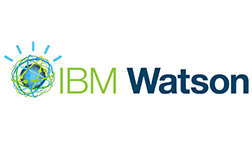There are three approaches to AI implementation emerging: the typical do-it-yourself approach where you do everything yourself that has the highest potential for failure; a services-based approach as highlighted by Lenovo’s Innovators program; and an AI appliance like IBM’s watsonx, with risk declining for each method in order. Each approach has its advantages and disadvantages, so let’s cover each in turn.
DIY
The most failures I’ve seen come from the DIY approach largely because AI, particularly generative AI, is new, and companies lack the AI expertise they need to build a solution that will work best for them. However, those that do have the experience will generally find that being able to pick from a pool of vendors they have already vetted and using their greater knowledge of their existing business structure and business imperatives should be able to craft a solution that better meets their needs.
Obviously, knowledge of how to use AI, and even using generative AI to help craft the solution, will improve over time, but most firms just don’t have the internal knowledge and understanding yet to take the DIY path. Learning by doing has always been the most expensive and least successful approach to any technology. Much of the risk can be mitigated by hiring or renting experienced people that have implemented this technology before, but they will still need to understand the unique aspects of the company’s infrastructure, current and future AI needs, as well as any critical dependencies that will need to be addressed in both planning and implementation.
Until a company has established expertise in AI, I don’t recommend this path as it has the highest probability of critical failure.
Lenovo’s AI Innovators Program
This is the first and probably not the last services-based approach to the problem. What Lenovo’s AI Innovators’ program promises is a deep understanding of the 35 best AI tools currently in market to better craft a customized solution to your unique AI requirements.
From data acquisition, to security, to implementation, Lenovo’s AI Innovators program, will provide the knowledge, best products in their portfolio, and services teams for successful implementation to better assure the success of your AI project.
Like most companies, Lenovo is somewhat new to AI. While Lenovo can help you build the training databases you’ll need for your implementation, Lenovo’s ability to enhance and enrich those databases is limited and that will extend the project time over the next choice.
With this approach, you get many of the advantages of the DIY approach but fewer technology choices and far less risk that the project will fail if you operate in one of the vertical markets Lenovo is targeting with this effort. Those markets include finance, healthcare, manufacturing, retail and smart cities.
IBM Watsonx
WatsonX is a monolithic AI-in-a-box approach to this problem. It lacks the breadth of either the Lenovo or DIY options but, while more limited, it is vastly more mature, and it is the only offering of the group that can access massive IBM databases for training the AI. That’s one of the advantages IBM enjoys because of its huge footprint in the AI segment with the original Watson. Watsonx has three highly integrated components, watsonx.data which provides an accelerated time to market, watsonx.ai which makes the decisions, and watsonx.governance which assures the resulting tool is well tuned and operates as intended.
Watsonx Data is a data store built on open lakehouse architecture, and this ability to include large data training sets should substantially reduce the implementation time and related risk associated with this approach. Upfront costs can be higher, sometimes substantially higher than the other two approaches, but in exchange, you get a solution that is more robust, more secure and faster to spin up than the other two choices. 
Like Lenovo’s offering, the most successful implementations will be where IBM is strongest, like banking and finance, but IBM has competencies in other industries like healthcare and government, and much of its initial work has been with support and sales that should cross industries.
Wrapping up:
Across these choices, flexibility and risk are on opposite vectors, with IBM’s solution being the least flexible and least risky, and the DIY choice having the greatest risk and flexibility while Lenovo’s solution lands someplace in the middle with the least risk.
Each of these selections also benefits from inside competence regardless of choice because only you know what you need out of the solution. Making sure your requirements and goals are well stated in a way that the partner vendors can best understand will benefit all choices here.
So, developing AI competence over time should be a priority regardless of the choice you make, but it’s critical with the DIY choice. In the end, all of us will be deploying AI. Picking the path and vendors that best correspond to your abilities, your industry, your tolerance for risk and your budget will undoubtedly have the best outcome. Good luck out there!
About the author: As President and Principal Analyst of the Enderle Group, Rob Enderle provides regional and global companies with guidance in how to create credible dialogue with the market, target customer needs, create new business opportunities, anticipate technology changes, select vendors and products, and practice zero dollar marketing. For over 20 years Rob has worked for and with companies like Microsoft, HP, IBM, Dell, Toshiba, Gateway, Sony, USAA, Texas Instruments, AMD, Intel, Credit Suisse First Boston, ROLM, and Siemens.
Rob Enderle provides regional and global companies with guidance in how to create credible dialogue with the market, target customer needs, create new business opportunities, anticipate technology changes, select vendors and products, and practice zero dollar marketing. For over 20 years Rob has worked for and with companies like Microsoft, HP, IBM, Dell, Toshiba, Gateway, Sony, USAA, Texas Instruments, AMD, Intel, Credit Suisse First Boston, ROLM, and Siemens.
Related Items:
Should Employees Own the Generative AI Tools that Enhance or Replace Them?
Wrapping our Heads Around CES 2023 and Next Generation Applied AI
Do We Need to Redefine Ethics for AI?
The post The Three Approaches to AI Implementation appeared first on Datanami.

0 Commentaires